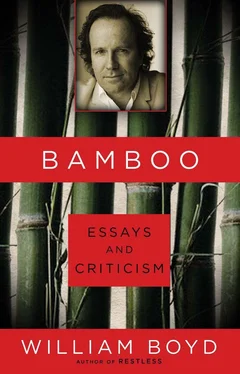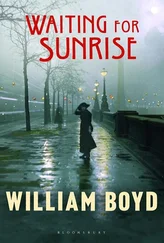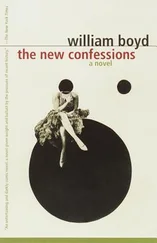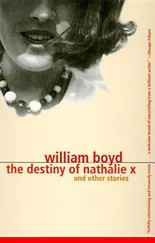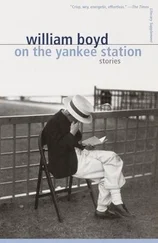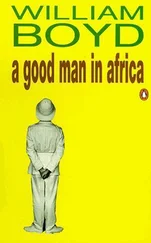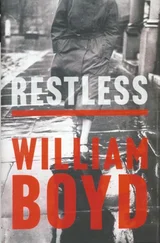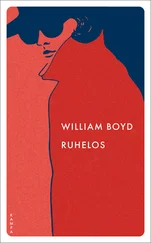No one knows what really happened to the Baroness and Philippson, certainly they were never seen in Tahiti or anywhere else. But the consensus on the island, even at the time, was that Lorenz killed the Baroness and Philippson and dumped their bodies in the ocean for the sharks to dispose of. However it is most unlikely that such a weak-willed and physically wasted man could have overpowered them both single-handedly. His most likely accomplice was Friedrich, whose loathing of the Baroness was intense and who publicly exulted in her “departure.” Moreover, he regarded his relationship with Dore as effectively over and, for the last few months before his death, had been urging her to leave the island. With the Baroness gone, and Dore banished, and the Wittmers no challenge, he could resume his self-appointed role as solitary philosopher king of Floreana.
And Friedrich? In a book Dore wrote some years later she said he died of a stroke but the symptoms all point to botulin poisoning. The Wittmers claimed that Friedrich had told them earlier that the poisoned chicken meat would be safe to eat after it was boiled, and Dore told Alan Hancock she had given the meat “a good boiling.” Did Dore, either through malice or carelessness, not boil the meat enough? My own hunch is that she may have wanted to “punish” Friedrich for his suggestion that she leave him (after all, she had eaten the chicken herself, or so she claimed, and a sick Friedrich might have appreciated the ministrations of a dutiful Dore) but the punishment had gone hideously out of control.
Whatever the truth, the brute facts of the matter are that what began as an idealistic utopian experiment degenerated under the strain of the predictable human emotions of envy, pride, greed, lust and resentment — and a mix of atavistic territoriality and sexual threat — into a mystery that has fascinated and intrigued for over sixty years. Of the original settlers four died: one accidentally, one a victim of a possible crime of passion and the two others almost certainly as a result of cold-blooded murders motivated by fear and hatred. But who really did what to whom and why? The Galapagos Affair continues to enthral and beguile.
1995
In 1943, in open court, an American lawyer described Charlie Chaplin as “a little runt of a Svengali,” a “lecherous hound who lied like a cheap cockney cad.” The lawyer went on to call upon “American mothers and wives to stop this gray-headed buzzard dead in his tracks.” The world was at war and Charlie Chaplin was being hauled through the courts in a highly publicized, bitter and vituperative paternity suit. It was a low point in the extraordinary life of the world’s most popular entertainer, arguably the most famous film star in the history of the movies, but worse was to come.
Charlie Chaplin was born in south London, probably Walworth, in 1889. Both his father, Charles Chaplin senior, and his mother, Hannah, were moderately talented minor artistes in the Victorian music hall. Charles wrote and published a few songs but his modest career soon foundered on his chronic alcoholism. Hannah’s life in the theatre was cursed too, but this time by her mental instability. Legend has it that young Charlie’s first stage appearance occurred when his mother “dried” on stage in the middle of a song and her little son — he was five years old at the time — took over to the audience’s unequivocal delight and rousing acclaim.
By then, however, the Chaplin marriage was already over and, what with Charles senior’s descent into drunkenness, and Hannah’s religious dementia, Charlie and his half-brother Sydney’s early life was one of signal poverty and hardship. The family home was now located in a couple of rooms in a foetid Lambeth tenement where Hannah took in piece work and Charlie combed the mudflats of the Thames at low tide for anything salvageable that could be sold. Hannah’s indigence meant spells in the workhouse for both her children and on occasion the entire family. And there the routine humiliations of Victorian welfare were never forgotten by Chaplin: he was beaten and bullied and his head was shaved and daubed with iodine against ringworm. Sometimes Hannah was confined to the workhouse as well but her bouts of insanity saw her more and more often incarcerated in Cane Hill asylum, where her violent hysteria was treated by periods of isolation in a padded cell.
Sydney Chaplin, four years older than Charlie, made his escape from this distressing world by joining the merchant navy as an apprentice steward. Charlie, meanwhile, at the age of nine, embarked on a stage career — clog dancing with a variety troupe called “The Eight Lancashire Lads.” From now on he was to support his mother from his earnings as an actor and performer. Charles Chaplin senior died, aged only thirty-seven, from cirrhosis of the liver, and Hannah’s intermittent periods of delusion and dementia meant ever longer spells in the bleak precincts of Cane Hill.
Chaplin’s early stage career proved reasonably successful, occupying juvenile roles in long-running touring plays, but his first real break came when Sydney left off seafaring and found a job with one of the greatest impresarios of the music hall age — Fred Karno. Before long, Charlie Chaplin was also on the Karno bill, as a comedian and mimic, and thus began a rise in his fortunes that would only terminate half a century later.
Chaplin soon moved into the elite of Fred Karno’s Army — as the travelling vaudevillians were known — where he won particular acclaim for his drunk act — playing an “inebriated swell” who pretends to interrupt the show. Chaplin worked with Karno’s troupe for eight years and it was during this period that he acquired and perfected the comic skills — the timing, the gags, the pratfalls and slapstick — that he was to put to such innovative use in the early silent movies. By the time Chaplin left for a tour of America in 1913 he was a thorough professional. He was earning £8 a week and had prominent billing on the company’s posters. He was a small man — about five feet four — but dark and handsome, and a dapper and fastidious dresser. His first serious love affair occurred about this time, with a young dancer called Hetty Kelly, but was cut short by his embarkation for the American tour. However, Chaplin invested this shortlived, unconsummated teenage romance with tremendous romanticism. The love he felt for Hetty became exalted and transcendent and Hetty substitutes were to figure in many of his movies. Whenever he was with Hetty, he said, he “was walking in paradise with inner blissful excitement.” Something about her purity and youth (she was fifteen when he met her) obsessed Chaplin—“it was but a childish infatuation to her, but to me it was the beginnings of a spiritual development, a reaching out for beauty.”—and his retrospective fascination for her and what she represented (she died of influenza in 1919) may well have influenced his own sexual tastes and nature throughout the rest of his life.
The trip to America with the Karno company proved to be the watershed in Chaplin’s life. His stage act was watched one night by Mack Sen-nett, founder and producer of the Keystone Kops, and at the end of 1913 Chaplin was offered a job in the then embryonic world of the movies, at a salary of $150 a week (a multiple of twenty will give an approximation of what Chaplin’s salary is worth in today’s terms).
In 1914 Hollywood was nothing more than farmland — miles of orange and lemon groves — far from the outskirts of Los Angeles. The first studios were reconstituted farms and barns where short films were churned out at the rate of one every three days or so. The medium was not highly regarded and was seen as a modern “fad” being exploited by a bunch of get-rich-quick entrepreneurs. Chaplin went to work for the doyen of comedy film-makers and just as he had cut his music hall teeth with Fred Karno so Chaplin learned the film business from the loudmouthed, tobacco-chewing braggart that was Mack Sennett. In 1914 thirty-five films starring Charlie Chaplin were released. By the end of the year Chaplin signed a new contract with a new company, Essanay. His salary had climbed to $1,250 a week.
Читать дальше
